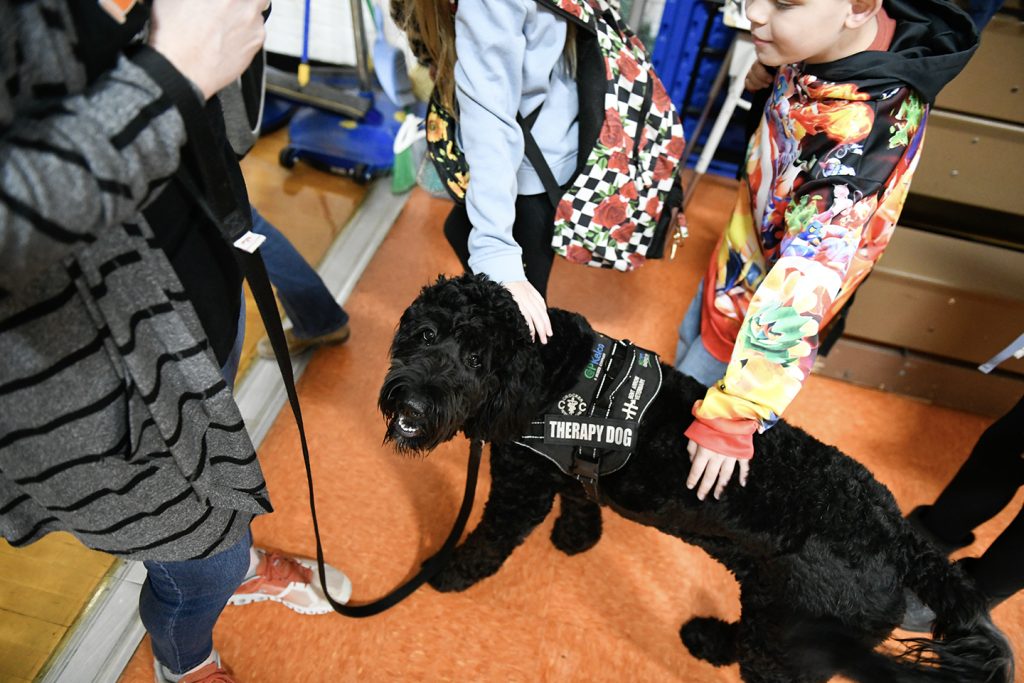Service Dog Training: How to Prepare Your Animal for Assistance and Mobility

Understanding Service Dog Training
Service dogs play a vital role in enhancing the quality of life for individuals with disabilities. These specially trained animals provide assistance and mobility, offering support that can transform daily activities for their handlers. But preparing a dog for this important job requires a thoughtful approach and commitment. It is not merely about obedience; it is about fostering a deep connection that enhances trust and reliability between the dog and its owner.
Essential Aspects of Service Dog Training
Training a service dog is not just about teaching commands; it’s about creating a strong bond and ensuring reliability. The training process can take anywhere from six months to two years, depending on the specific needs of the handler and the types of tasks the dog will perform. Here are some key elements to consider:
- Basic Obedience: Mastery of commands like sit, stay, and come is fundamental. A service dog must be able to respond to commands promptly and accurately to ensure safety and effectiveness in various settings.
- Socialization: Service dogs must be exposed to a variety of environments, people, and situations. This exposure helps them remain calm and composed, whether they are navigating a crowded supermarket or waiting in a busy airport, allowing them to function effectively in all aspects of their handler’s life.
- Task-Specific Training: Depending on the handler’s needs, service dogs are trained for specific tasks. For instance, a guide dog is trained to assist visually impaired individuals by navigating obstacles, while a medical alert dog may be trained to sense changes in their handler’s blood sugar levels or alert them to an impending seizure.
The process is both rigorous and rewarding, as the bond between a service dog and its handler deepens through training. Additionally, the legal requirements in the United States regarding service animals are crucial for ensuring both the handler and the dog can navigate public spaces seamlessly. Understanding the Americans with Disabilities Act (ADA) helps handlers recognize their rights and the specific recognition their service dogs possess.
Why This Matters
Every year, individuals with disabilities seek ways to regain independence. Statistics reveal that more than 60 million people in the U.S. live with some form of disability, highlighting an urgent need for effective support systems. Service dog training empowers these individuals to lead more fulfilling lives by providing the practical assistance necessary for daily activities. Furthermore, the companionship of a service dog can drastically improve mental health and emotional well-being.
By learning about how to prepare a service dog effectively, you’re taking the first step towards supporting this essential partnership. Engaging with service organizations or trainers can provide valuable resources and information to further aid in this process, ensuring that potential handlers have the knowledge necessary to foster a successful relationship with their service dogs.

DON’T MISS: Click here to learn about building a strong bond with your pet
Unpacking the Training Process
The journey to transforming a dog into a certified service animal involves multiple layers of preparation, understanding, and commitment. Engaging in service dog training is not a straightforward task; it encompasses a blend of physical training, behavioral conditioning, and social acclimatization. By taking the time to understand the intricacies of this process, prospective handlers can provide their furry companions with the necessary skills to thrive in their roles.
Starting with the Basics
Before delving into specialized training, it is imperative to establish a solid foundation of basic obedience. This entails teaching your service dog essential commands, which serve as the building blocks for further training. The following commands should be prioritized:
- Sit: A command that helps the dog learn focus and control, redirecting energy in a calm manner.
- Stay: An essential skill for ensuring safety in unpredictable environments, allowing the handler to maintain control over the dog’s movements.
- Come: This command fosters reliability; being able to call your dog back is vital, especially in crowded settings.
- Leave it: This command teaches the dog to ignore distractions, reinforcing their focus on their handler’s needs.
Once a dog demonstrates proficiency in these basic commands, training can progress to more complex behaviors tailored to specific support needs, with the ultimate goal of achieving seamless interaction during daily tasks.
Social Skills and Adaptability
A well-trained service dog must not only follow commands but also interact positively with their surroundings. Proper socialization is critical: exposure to diverse environments—such as busy streets, bustling shops, and intricate public transport systems—will enhance the dog’s adaptability. During training, it is beneficial to:
- Introduce the dog to various people, including those wearing hats, using mobility aids, or engaging in loud activities.
- Encourage positive interactions with other animals, reducing the likelihood of distractions during important tasks.
- Simulate real-world scenarios, such as being in elevators, public transportation, or crowded sidewalks, to prepare the dog for service work.
By adapting to a range of settings, a service dog becomes accustomed to potential challenges they may encounter in daily life, allowing for smoother interactions for both the dog and the handler. This crucial aspect not only contributes to the effectiveness of the service dog but also fosters confidence in the handler, knowing their companion can navigate through various circumstances.
Additionally, understanding breed characteristics can significantly influence training success. Certain breeds, like Golden Retrievers and Labrador Retrievers, are often favored for their temperament and willingness to learn. However, it’s essential to consider individual personality traits and health conditions before committing to any breed.
The path to adequately preparing a service dog is demanding yet fulfilling. By investing time and effort into training, the bond between handler and dog strengthens, setting the stage for unparalleled companionship and assistance in daily life. As this journey unfolds, the potential of service dogs to facilitate independence and mobility becomes increasingly apparent.
Understanding the Essentials of Service Dog Training
Training a service dog is a multifaceted process that requires dedication, patience, and a clear understanding of the specific needs of both the handler and the dog. The primary goal of service dog training is to ensure that the animal can assist individuals with disabilities effectively. This begins with building a strong bond between the handler and the dog, which creates a foundation of trust and communication.
Key Training Techniques
Utilizing positive reinforcement is crucial for successful service dog training. This method encourages desired behaviors through rewards, making the experience enjoyable for the dog. Trainers should start with basic commands such as “sit,” “stay,” and “come,” gradually advancing to more complex tasks that address the specific mobility needs of the handler.Socialization also plays a vital role in training. Exposing the service dog to various environments, sounds, and people helps them to remain calm and focused in different situations. This exposure ensures that the dog can perform optimally while navigating bustling public places or in the presence of distractions.
Specialized Skills for Assistance
Specific skills must be taught to service dogs based on the individual’s requirements. For instance, dogs can learn to retrieve items, open doors, or assist with mobility support by guiding their handlers. Training often includes desensitization to assist the handler through panic attacks or seizures, showcasing the diverse capabilities of service animals.It’s important to note that training should be supervised by a certified professional, especially for those looking to have a service dog recognized legally. This ensures adherence to standards that guarantee the safety and effectiveness of service animals.Understanding the intricacies of training can provide handlers with the knowledge they need to prepare their service dogs for a lifetime of support and companionship. For more information on specific training techniques and professional resources, exploring local training programs can offer valuable guidance and insights.
DIVE DEEPER: Click here to learn about positive reinforcement techniques
Advanced Training Techniques
After establishing a foundation of basic obedience and socialization, the next step in the service dog training process entails introducing advanced skills that are tailored to the specific needs of the handler. These skills not only enhance the dog’s utility as a service animal but also ensure that the team can function seamlessly together in various situations. Each service dog may have a unique suite of tasks they are trained to perform, often depending on the disability of the handler.
Task-Specific Training
Task-specific training focuses on equipping the dog with abilities directly relevant to the handler’s condition. For example:
- Mobility Assistance: Dogs can be trained to help individuals with mobility impairments by providing balance during walking, retrieving dropped items, or even bracing themselves against their handler to offer support.
- Medical Alerts: Service dogs trained for medical alert purposes can detect changes in body chemistry, alerting their handlers to impending medical episodes such as seizures or diabetic crises through specific behaviors.
- Psychiatric Support: For handlers with mental health conditions, service dogs can be taught to perform grounding techniques, such as pawing or nudging their handler’s leg to interrupt anxiety episodes.
To achieve effective task-specific training, handlers should work closely with certified trainers who have knowledge of the specific duties required. This ensures that the skills being imparted are not only efficient but also reliable when real-world challenges arise.
Consistency and Reinforcement
One critical component of successful training is the importance of consistency in commands, environments, and reinforcement methods. Utilizing the same commands and signals across various settings is fundamental. Additionally:
- Employ positive reinforcement techniques, such as treats, praise, or play, to encourage desired behaviors during training sessions.
- Practice commands regularly to ensure the behaviors are ingrained. Short, frequent training sessions are generally more effective than long, infrequent ones.
- Be patient and understanding. Some skills may take longer for dogs to master, requiring repetition and encouragement.
Incorporating regular training into daily routines helps to reinforce the bond between the handler and the service dog, establishing a sense of teamwork that is essential for success.
Legal and Social Considerations
As handlers advance in their journey with their service dog, understanding the legal aspects surrounding service animals in the United States becomes crucial. The Americans with Disabilities Act (ADA) provides clear guidelines on the rights of individuals with service dogs. For instance:
- Service dogs must be individually trained to perform tasks that assist their handlers with disabilities.
- Businesses open to the public are required to allow service dogs in their premises, although staff are permitted to ask only two questions: whether the dog is required because of a disability and what tasks the dog has been trained to perform.
- Emotional support animals do not qualify as service animals under the ADA, which can sometimes lead to confusion in public venues.
Being informed about these regulations not only empowers handlers but also fosters a greater understanding within communities regarding the importance of service dogs, paving the way for a more inclusive environment.
Ultimately, the success of a service dog hinges on the rigorous training process tailored to the handler’s unique requirements and the continuous reinforcement of essential skills. As this partnership blossoms, the profound impact a service dog has on enhancing independence and functionality becomes increasingly evident.
DIVE DEEPER: Click here to discover more about building a strong bond with your pet</p
Conclusion
In conclusion, service dog training represents a vital commitment to enhancing the lives of individuals with disabilities. This comprehensive process, which begins with establishing basic obedience and progresses to advanced skills tailored to specific needs, is instrumental in fostering a strong partnership between the handler and their service animal. From mobility assistance to medical alerts and psychiatric support, the plethora of tasks a service dog can be trained to perform highlights the incredible versatility and capability of these animals.
Moreover, the emphasis on consistency and positive reinforcement cannot be overstated. By ensuring that training is a regular part of the daily routine, handlers can cultivate a harmonious bond that is critical for effective teamwork in real-life scenarios. Understanding the legal frameworks set forth by the Americans with Disabilities Act (ADA) empowers handlers, ensuring they are well-equipped to navigate public spaces with confidence and authority.
As society becomes more aware of the immense role service dogs play, it is vital to advocate for inclusivity and respect for these trained animals. Whether you are considering getting a service dog or are currently in the process, the devotion you show in preparing your animal will undoubtedly yield profound benefits. To further explore this topic, consider seeking out professional training resources, informative literature, and community support, which can deepen your understanding and help optimize the relationship with your service dog.



